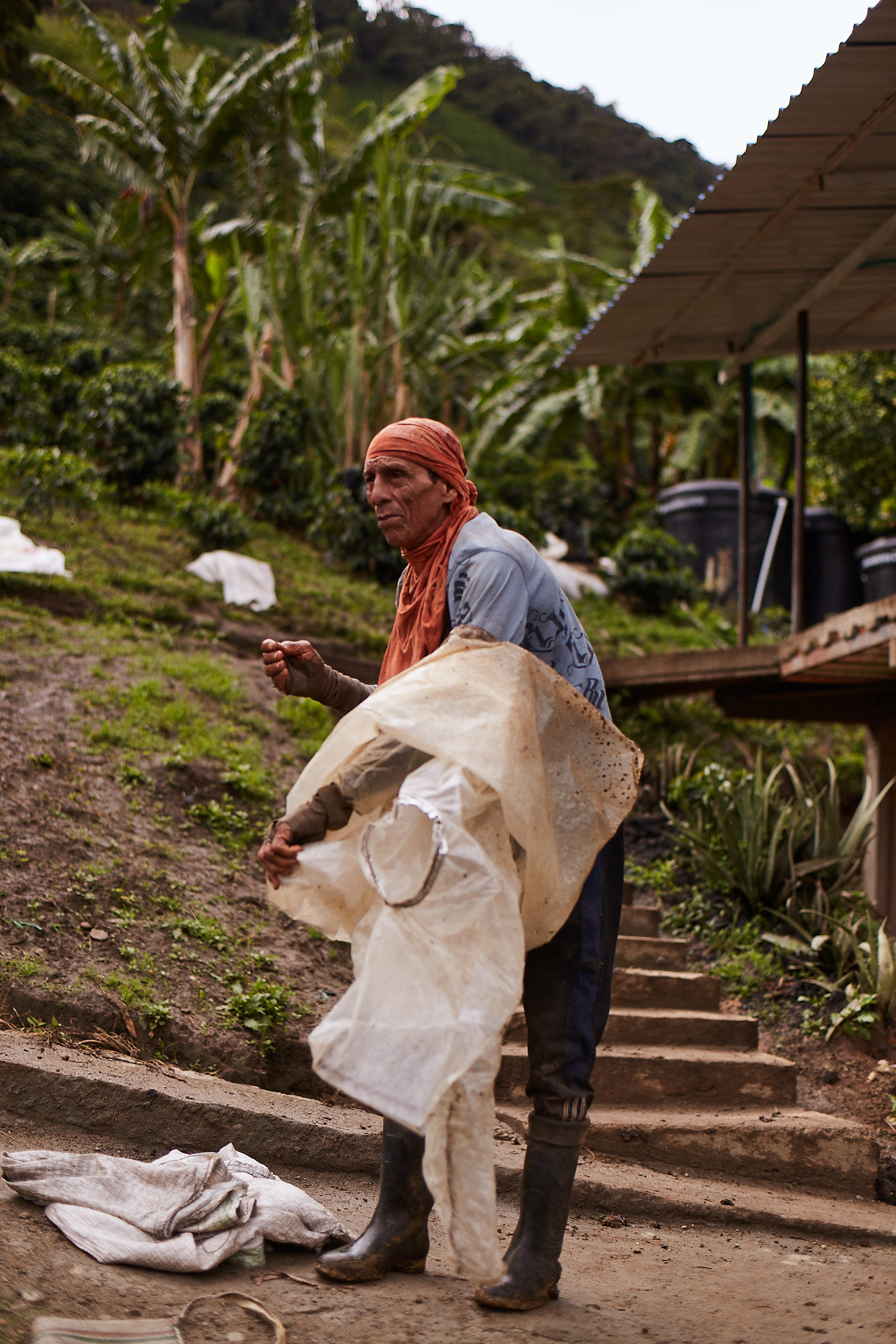History of Colombian Coffee
We have sourced from Colombia since 2014, focusing on building long-term relationships with producer groups, cooperatives, and specialty exporters in Huila, Tolima, Nariño, and Antioquia. Through our programs, we purchase microlots and larger value-added community lots, separating high-quality parchment for cupping and approval. Our Colombian office and cupping lab in Bogotá allow us to oversee quality and maintain transparency throughout the supply chain. Our approach integrates traceability and education, helping farmers understand production costs, cup profiles, and market expectations. By collaborating closely with trusted partners, we ensure that high-quality coffees are not lost in large regional blends, and that farmers benefit from premiums above market rates.

Specialty Coffee Production in Colombia
Colombian coffees are popular for their sweetness, balance, and clarity. While Caturra is often recognised for its favourable flavour attributes, Colombia and Castillo varieties can also produce exceptional cups when managed carefully. The origin supports both microlots and communal lots, allowing for a mix of small-scale experimentation and larger, traceable selections.
Read about how is coffee commercialised in Colombia?
Growing Colombian Coffee Beans
In Colombia, harvests are split between the main crop and the fly crop (Mitaca), which means fresh coffees are available twice a year. This staggered cycle not only supports a steadier cash flow for farmers, but also explains why Colombian lots arrive more frequently on our offer list. Farmers typically grow a mix of 1–3 cultivars, helping maintain genetic diversity and reduce disease risk. Cherries are harvested selectively over three to four passes, with the second and third passes often yielding the highest quality. Incentivising pickers to harvest only ripe cherries is a challenge, as most payments are volume-based. Hand sorting at the farm or pulper is sometimes used to ensure uniformity.
What Coffee Varieties Are Grown in Colombia?
While Caturra is often recognised for its favourable flavour attributes, Colombia and Castillo varieties can also produce exceptional cups when managed carefully. Farmers typically grow a mix of 1–3 cultivars, helping maintain genetic diversity and reduce disease risk.
Coffee Harvest and Post-Harvest
Processing is dominated by dry fermentation, often in small manual or electric pulpers, followed by sun-drying on rooftops, patios, or parabolic dryers that protect the coffee from rain. Some producers rinse or wet ferment, exchanging water in the tanks to slow fermentation and improve consistency.
Drying is closely monitored, targeting moisture levels below 11% over 10–18 days, to maintain cup quality and shelf life. Mechanical dryers are avoided unless necessary, as they can compromise flavour and ageing potential.
Colombia Coffee Growing Regions
We have sourced from Colombia since 2014, focusing on building long-term relationships with producer groups, cooperatives, and specialty exporters in Huila, Tolima, Nariño, and Antioquia.
Huila is known for its high-altitude farms and volcanic soils, producing coffees with bright acidity, pronounced sweetness, and complex floral and fruit notes. The region has a strong reputation for consistently high-quality specialty coffee.
Tolima sits along the central Andean range, offering diverse microclimates that yield coffees with balanced acidity, chocolatey body, and vibrant fruit flavors. Innovative processing methods are increasingly shaping its distinctive profiles.
Nariño, located near the Ecuadorian border, is one of Colombia’s highest coffee-growing regions. Its coffees are often celebrated for their lively acidity, crisp citrus notes, and layered sweetness, reflecting the unique volcanic soils and cooler climate.
Antioquia is a more traditional coffee region with a long history in the industry. Its coffees typically feature a well-rounded body, moderate acidity, and nutty, caramel-like flavors, making them approachable while still expressing regional character.

Colombian Coffee Flavour
Colombian specialty generally very complex, rich and fruit-driven with florals, berries, mature plum, grapes, blackberry, currants, stone fruit and citrus.
Impact on the Colombian Coffee Sector
We prioritise long-term relationships and economic sustainability. By paying premiums above local averages, we help farmers to invest in quality and remain competitive. Our programs also provide guidance on optimal harvest, processing, and drying techniques. The larger communal lots allow small producers to access the specialty market, while microlots highlight the potential of individual farmers. Through transparency, education, and premium pricing, we aim to strengthen the specialty coffee sector in Colombia, ensuring that exceptional coffees are rewarded and that farmers can sustain and grow their operations.
Introducing La Soledad: a project with our newest supplier in Colombia
Learn more about our other coffees from South America
What Makes Peru’s Natural Coffees So Rare and Exceptional
Coffee Picking in Brazil: Balancing Quality, Cost, and Practicality
Luzia Collective: A female produced coffee from Sul de Minas
Find our Colombian Coffees here on our Offer List!

